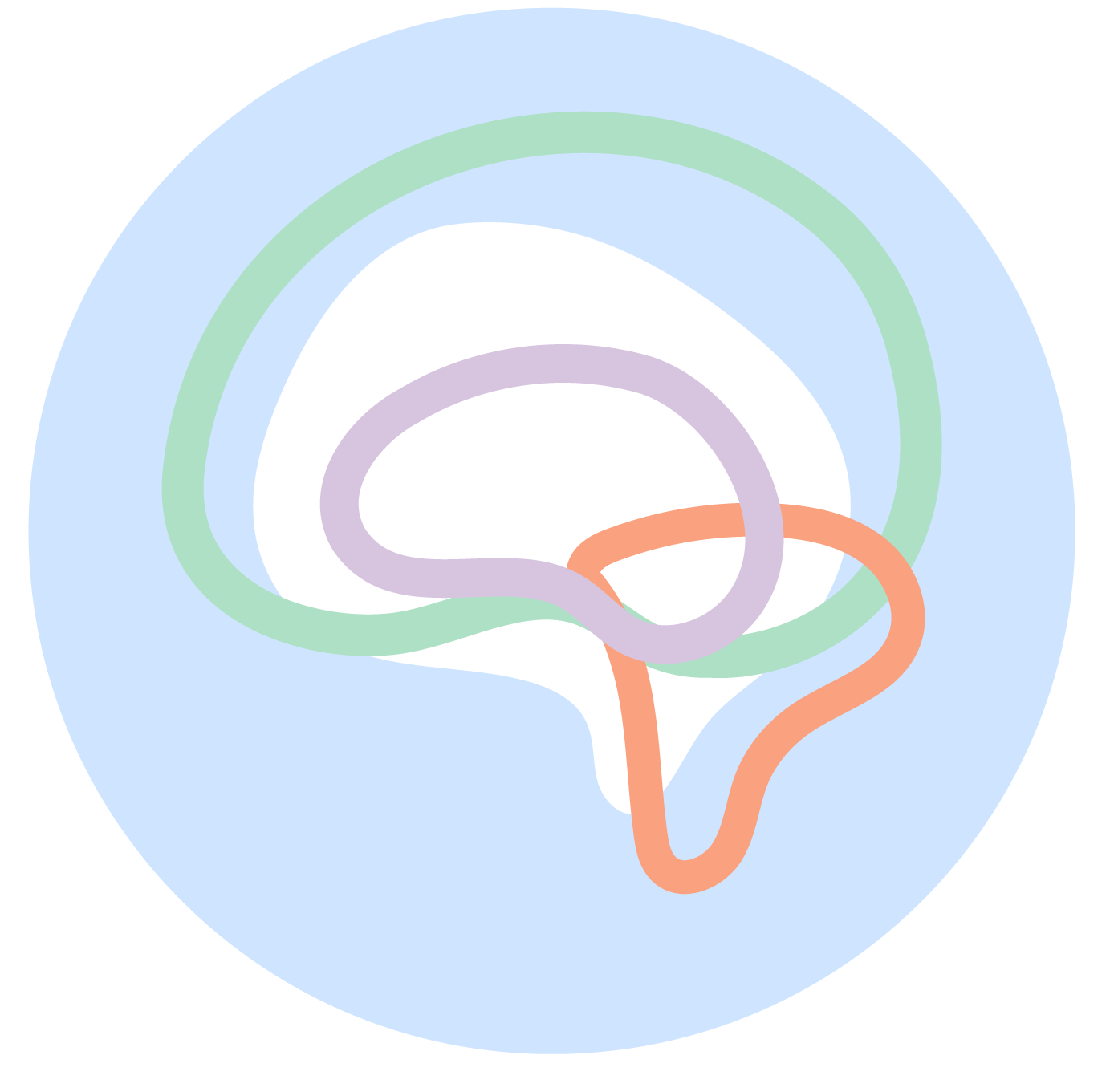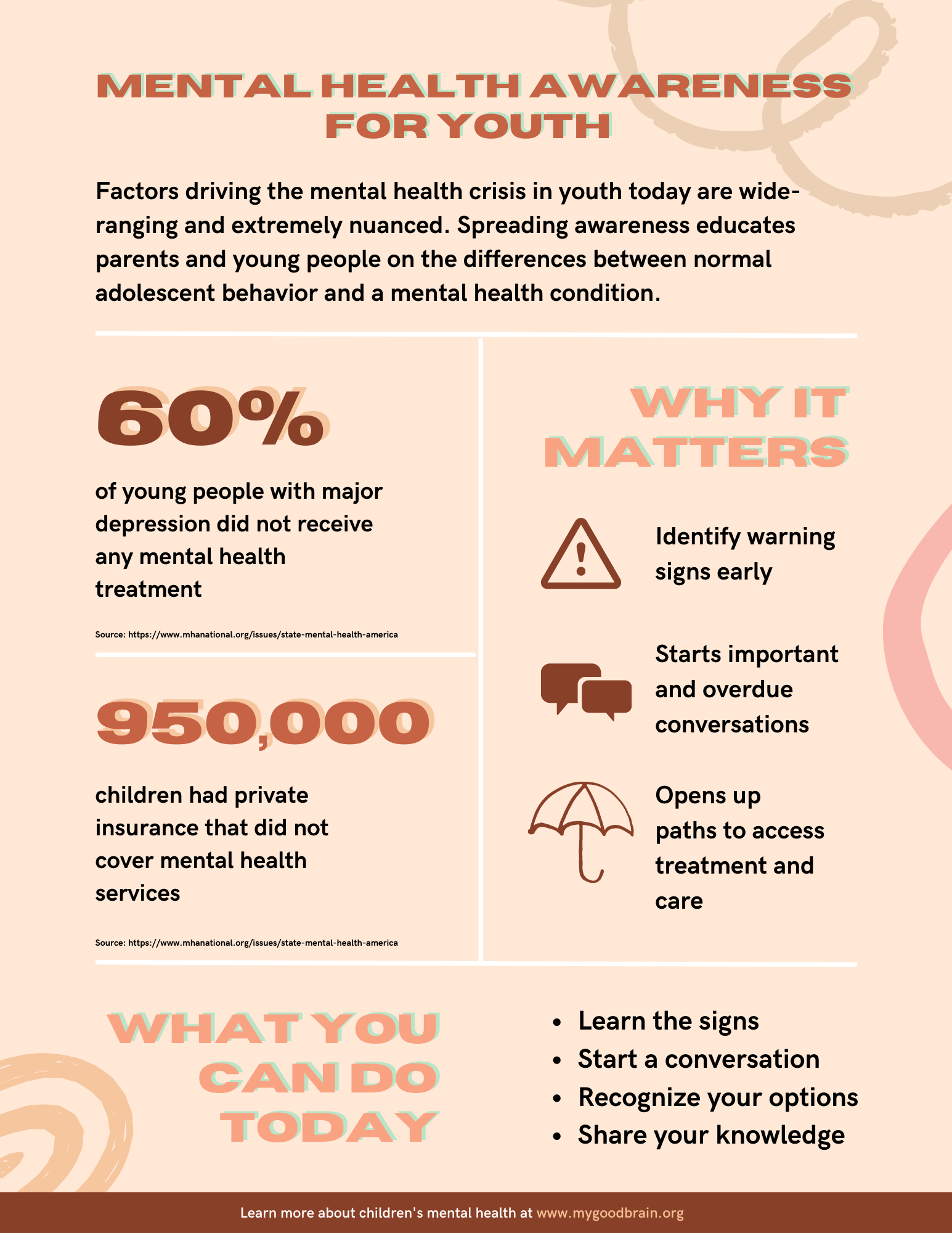The Importance of Mental Health Awareness for Youth
Youth mental health has been on the decline over time, propelled further by social and economic stress exerted by the pandemic. The CDC reports that over the past two years, U.S. high school students experienced heightened emotional and physical abuse at home, negative effects from a parent or caretaker’s unemployment, and racism.
Spreading awareness on the state of mental health in youth is necessary to surface deep and honest conversations on the many ways adolescents are subjected to high levels of stress and trauma. It allows communities across all demographic groups to recognize the warning signs and prevent the dismissal of severe struggles as just another assumed kid or teenage habit.
We encourage you to learn about the complexities of youth mental health and share ways to recognize and support young people around you on their journey to love themselves again.
Awareness opens up paths to receiving care
A study by Mental Health America found that over 60% of young people with major depression did not receive any mental health treatment, even in states with the greatest access to mental health care.
Factors driving the mental health crisis in youth today are wide-ranging and extremely nuanced, often creating the illusion of a lack of severity and a simple way out. For example, social media is often blamed for worsening mental health in young people, but data has shown too many inconsistencies to create a sweeping generalization that applies to all young people in crisis.
To put it bluntly, making young children and teenagers spend less time on their phones or computers isn’t going to make the uptick in anxiety and depression disappear.
Young people and their families can easily leave warning signs and symptoms unattended due to the lack of awareness on what defines a mental health condition, how to get started with diagnosis and tests, how to seek professional help, and how to best utilize insurance options to access professional care.
Awareness efforts today focus on pointing the youth and their parents toward a more holistic understanding of situational drivers at home, school, and surrounding social circles, before making any assumptions.
Organizations like Mental Health America (MHA) and the National Alliance on Mental Illness (NAMI) educate parents and young people on the differences between normal adolescent behavior and a mental health condition. These resources — which include guidance on how to find help, talk to peers and adults, and actively manage strong emotions on a daily basis — help adolescents and their parents feel less alone and more capable of navigating a mental health diagnosis and subsequent care. Below are a few other resources you can use and share to encourage necessary mental health action:
Identifying the signs and symptoms
Mental illness in children: Know the signs (Mayo Clinic)
Digital Shareables on Child and Adolescent Mental Health (National Institute of Mental Health)
Understanding health insurance
Types of health insurance (NAMI)
Find coverage for kids and teens (InsureKidsNow.gov)
Health insurance and mental health services (MentalHealth.gov)
Children's Health Insurance Program (CHIP) Benefits (Medicaid)
Encouraging open conversations
How to have conversations about mental health (Seize the Awkward)
Talking To Adolescents And Teens: Starting The Conversation (MHA)
Talking To Adolescents And Teens: What To Do And Where To Go (MHA)
How your awareness efforts can make a difference
Awareness of mental health warning signs, ways to get accessible care, and methods to engage in honest conversations with loved ones go a long way in helping young people feel seen, respected, and loved as they navigate strong and overwhelming emotions. It creates an environment where we can all count on each other to protect the youth in a world saturated with information and social stimulation that’s difficult to filter and ignore.
Take a few minutes out of each day to be still with your own thoughts and to check in on yourself, your family, your peers, and anybody who’s going through a difficult time. Here are some ways you can get started on promoting and practicing awareness at an individual level:
Guided meditations: Never underestimate the power of a deep breath, being present, and finding a sense of peace.
Creating art: My Good Brain’s mission is to bridge psychology and art so we can promote creativity as a method of healing. Check out how you can be a part of our programs like Sunday Art Club and Teen Creative Arts.
Book challenges: A big list of book challenges of different genres and prompts to fill up your time and keep you on your toes.
Coloring pages: Created by writer and artist Dani DiPirro (@positivelypresent on Instagram), these downloadable freebies are engaging and a whole lot of fun.
Guided journals: If you’re thinking about journaling but don’t know how or where to start, these guided journals handpicked by mental health professionals are filled with prompts to get your reflective juices going.
Social media accounts to follow: We all want positivity on our social media feeds — and these accounts are full of them. From beautiful illustrations to quick tips and even memes, there’s something on this list for everyone.

